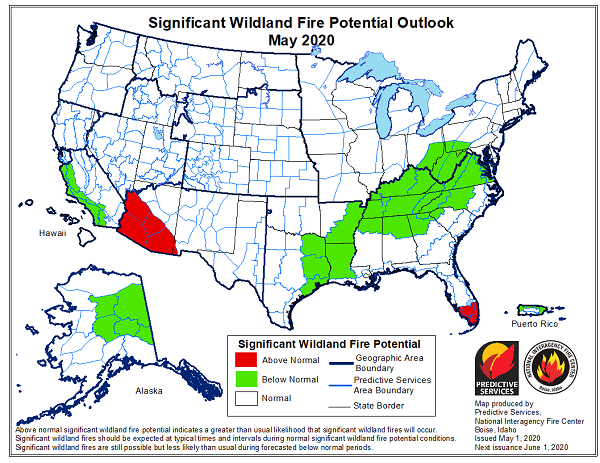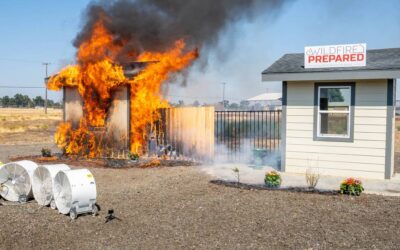May, June, July and August 2020

Predictive Services, National Interagency Fire Center
The wildland fire potential forecasts included in this outlook represent the cumulative forecasts of the ten Geographic Area Predictive Services units and the National Predictive Services unit.
National fire activity remained light in April. Southern Area received the most reports of wildfire occurrence followed by the Great Basin. The Southwest began to see a slight increase in activity late in the month. Drier than average conditions developed along the Mexican Border and across the Pacific Northwest as both areas received less than 25% of average precipitation. Great improvement was observed across Southern California and far southwestern Nevada where precipitation amounts were nearly 800% of normal during the first half of the month. Florida and South Texas also experienced gradual improvement. Temperatures were generally near to below average except along the West Coast and across the Deep South where they were above average. The transition toward summer began in late April as high pressure ridge events over the West became more frequent.
Mountain snowpack remained above average on the Continental Divide, Canadian Border, and in the Alaskan Interior. It was below average across the High Sierra, Southern Cascades, Great Basin, Sawtooth Mountains, Kenai Peninsula, and the Chugach Mountains. Snowpack melting rates accelerated during late April across the Inland West, Oregon, Central Washington and the Kenai Peninsula. Drought intensification and expansion was observed in the Northwest.
May is the transitional period into the Western Fire Season. Overall, the entry into the season is expected to be normal; however, there are areas of concern emerging for the summer months. While the Pacific Northwest received beneficial precipitation in late April, the overall pattern has been warm and dry which may be problematic for Oregon and Central through Eastern Washington. Northern California and the Great Basin area are also areas to monitor closely for Above Normal significant wildland fire potential as fuels continue to dry and cure. Additionally, fine fuel loading is expected to be above average for the third consecutive year in the lower elevations. Those fuels will dry and cure, becoming receptive to fire by mid-June. READ MORE




